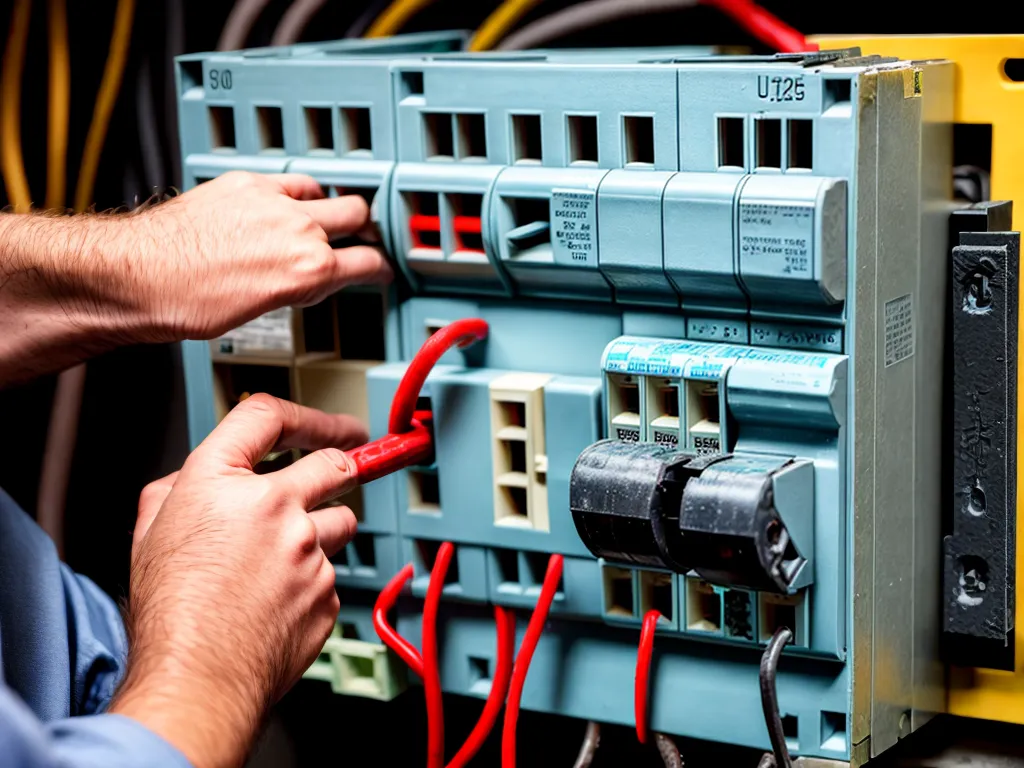
Working with an old electrical panel that has unlabeled circuit breakers can be frustrating and dangerous. However, with some detective work and electrical testing, I can identify and label the circuits to make the panel safer and more usable.
Understanding Electrical Panels and Circuit Breakers
Before troubleshooting an unlabeled panel, it helps to understand the basics of how residential electrical systems work.
The Main Service Panel
The main service panel is the central hub that connects the external power lines to the internal circuits. This panel contains:
-
Main breaker - This breaker shuts off power to the whole panel and is usually 200 amps or more.
-
Individual circuit breakers - Each circuit breaker provides overcurrent protection for its individual circuit. Standard breakers are 15 or 20 amps.
-
Bus bars - These thick bars distribute power to all the breakers in the panel.
-
Neutral and ground buses - These buses connect the neutral and ground wires.
-
Overcurrent protection - The breakers trip to shut off power if there is an overload or short circuit in their circuit. This prevents wires from overheating and causing fires.
Circuit Breaker Labeling
Circuit breakers should be clearly labeled to identify which circuit each one controls. This is important for three reasons:
- Allows quickly shutting off power to a specific circuit for repairs.
- Prevents accidental shutdown of critical appliances on shared circuits.
- Provides information to emergency personnel about the electrical system.
Unfortunately, labels in older panels often go missing or become inaccurate over time.
Preparing to Troubleshoot the Panel
Before testing any circuits, I need to take some preliminary safety steps:
Turn Off Main Breaker
- Shut off the main breaker to remove power from the whole panel. This prevents any live circuits from shocking me while I work.
Take Pictures
- Photograph the full interior of the panel before making any changes. This provides a reference to restore the original setup later.
Gather Supplies
-
Have the following supplies on hand:
-
Voltmeter
- Warning labels or tape
- Notepad and marker
- Flashlight
- PPE like gloves and eye protection
Notify Household
- Inform household members I will be shutting off power. Advise against operating outlets or light switches while I have circuits disconnected.
Testing and Labeling Circuits
With safety preparations complete, I can now isolate, test, and label each mystery circuit:
Isolate Circuits
- Turn off all individual breakers. This leaves all circuits disconnected from power.
Restore Power to Main Breaker
- Switch the main breaker back on. This restores power to the bus bars but keeps all circuits off.
Test Each Circuit
-
Switch on one unknown breaker at a time.
-
Plug in a voltmeter, light, or other device at various outlets.
-
Take note when the circuit becomes live. This indicates which outlets/fixtures it controls.
-
Also make a loud noise and have an assistant watch for ceiling lights turning on. Overhead lighting is often on bedroom, hallway, or stairwell circuits.
-
Label the breaker control switch with detailed notes on what it powers.
-
Turn off the breaker again before moving to the next one.
Label Dangerous Multi-Wire Circuits
Some older panels have multi-wire branch circuits that share a neutral wire. These must have their individual breakers tied or labeled together. This ensures both hot wires get shut off together, which is critical for safety.
Verify Critical Circuits
Double check that any essential appliances like refrigerators, heating systems, or medical devices are on dedicated circuits. These may need warning labels to prevent accidental shutoff.
Restoring Full Power
Once all unlabeled breakers have been identified, the last step is to restore power:
-
Check that all breaker switches match my newly created labels.
-
Ensure any covers are reinstalled in the panel box.
-
Turn the main breaker back on.
-
Do a walkthrough test to verify power and lighting circuits are operating normally.
-
Inform the household that the electrical panel troubleshooting is complete.
With all of the circuits now properly labeled, the previously confusing electrical panel is much safer and easier to operate. Household members can quickly shut off power to do electrical work or reset tripped breakers when needed. Proper labeling provides valuable protection that helps prevent electrical shocks, overloads, or fire hazards down the line.